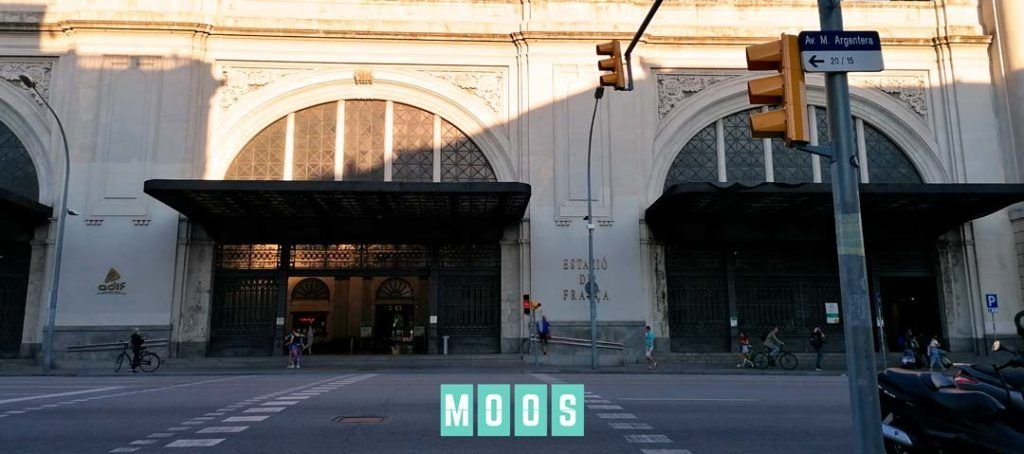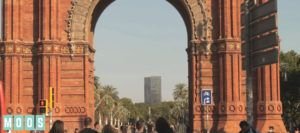An undeniable attraction of the city of Barcelona, especially when summer comes, are its beaches.
In the months of June, July and August, the Barceloneta neighborhood becomes a hotbed of tourists and the occasional local, seeking to cool off in the sea and a sunbathe.
The charm of the streets and the people of the neighborhood, its gastronomic offer and the fact that it is the closest gateway to the Mediterranean form the center and old town of the city, make Barceloneta and its beaches a very popular and demanded spot by those who visit Barcelona.
On days when we feel that summer is just around the corner, and we imagine ourselves in bathing suits enjoying a good dip, we thought that it would not be bad to remember what the origin of this little piece of land near the sea is.
Because it must be said clearly: Barceloneta did not exist (and I do not mean the neighborhood, but the lands where it is located today) until the fifteenth century, when the first sediments began to be deposited that, over the centuries, would give rise to this emblematic neighborhood of Barcelona.
But let’s go to the beginning, to understand it better.
FROM ISLAND TO ICONIC NEIGHBORHOOD
he city’s coastline was not what it is today, not even remotely. In the 6th century B.C. there was a bay between the Montjuïc mountain and Mount Táber, which allowed the waters to enter well into what is now Barcelona (it is believed that the sea reached where Plaça Catalunya is today).
The process will be slow, but constant: the sea will withdraw, giving rise to small islands and lagoons at the beginning, and to firm lands later. It will be in those lands where new inhabitants will settle. Layetanos (the original inhabitants), Romans and Visigoths will pass.
PBy the 13th century, Barcelona will be a medieval city with a deep relationship with the sea. A sea that came very close to the now famous church of Santa María del Mar (the same one that gives its name to Ildefons Falcones’ book, “The Cathedral of the Sea”); and the beaches, full of merchants, boatmen, fishermen and, why not also pirates and corsairs, stretched between what we now know as Pla del Palau and Parc de la Ciutadella.

With the XV century comes the sea wall (one of its limits is where the plaza Antonio López is today), which will spread to the entire seafront over the years. Also, the works for a port begin. With its consolidation, the commercial activity of the beaches will be transferred to the new port life of Barcelona.
The works of the port begin at the request of King Joan II of Aragon, in 1477. In this context, it is when a breakwater is created to join the coasts of Barcelona with a sandbank, known as Maians Island. From there, the old port of Barcelona will begin to grow.

And it is with this port that a dike appears, known as “Dique del Este” or East Dike, which is key to understanding the emergence of the origins of Barceloneta. Settled on the old Maians Island, it will grow in extension over the centuries, it will contain the sands transported by the maritime cycle and the remains of sediments carried and deposited by the Besòs river.
In this way, the natural process of formation of a beach will accelerate, which will win 500 meters to the sea in the first 200 years; and they will be between 800 and 900 meters today.
The name of Maians, according to some versions, comes from the surname of a merchant who docked his ships there when he came to trade in the city.
And the truth is that before becoming the embryo of the port, that bank of sands did not have a great function. But thanks to the work of the genoese Stassi of Alexandria, the breakwater that annexed the fate of the Isle of Maians to that of Barcelona, allowed the birth of a port that would not stop growing. And unintentionally, the origin of one of the most beautiful neighborhoods in the city.
So, from now on, when you walk through the area that includes the Pla del Palau and the Estació de França, remember that you walk on an island that is almost, almost forgotten.

Sources: barcelona.cat / barcelonasecreta.com / La Vanguardia







0 Comments